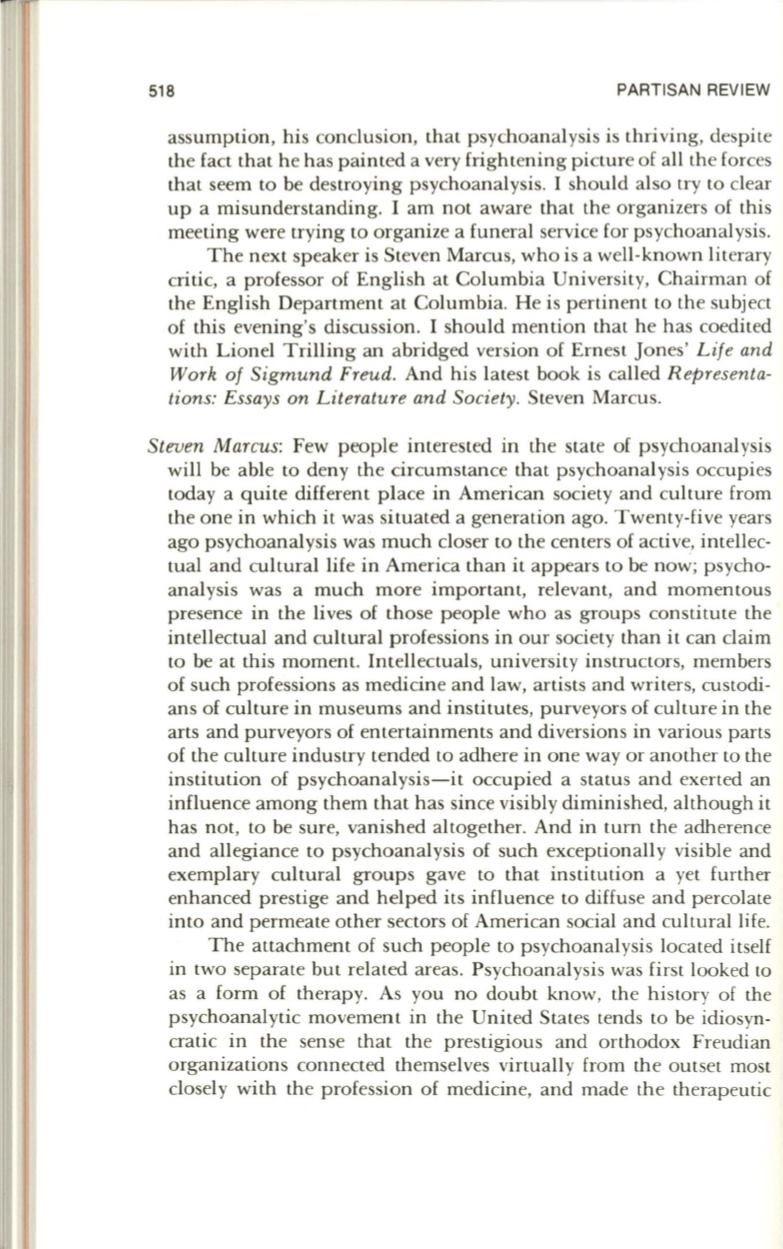
518
PARTISAN REVIEW
assumption, his conclusion, that psychoanalysis is thriving, despite
the fact that he has painted a very frightening picture of all the forces
that seem to be destroying psychoanalysis. I should also try to clear
up a misunderstanding. I am not aware that the organizers of this
meeting were trying to organize a funeral service for psychoanalysis.
The next speaker is Steven Marcus, who is a well-known literary
critic, a professor of English at Columbia University, Chairman of
the English Department at Columbia. He is pertinent to the subject
of this evening's discussion. I should mention that he has coedited
with Lionel Trilling an abridged version of Ernest Jones'
Life and
Work of Sigmund Freud.
And his latest book is called
Representa–
tions: Essays on Literature and Society.
Steven Marcus.
Steven Marcus:
Few people interested in the state of psychoanalysis
will be able to deny the circumstance that psychoanalysis occupies
today a quite different place in American society and culture from
the one in which it was situated a generation ago. Twenty-five years
ago psychoanalysis was much closer to the centers of active, intellec–
tual and cultural life in America than it appears to be
no~;
psycho–
analysis was a much more important, relevant, and momentous
presence in the lives of those people who as groups constitute the
intellectual and cultural professions in our society than it can claim
to be at this moment. Intellectuals, university instructors, members
of such professions as medicine and law, artists and writers, custodi–
ans of culture in museums and institutes, purveyors of culture in the
arts and purveyors of entertainments and diversions in various parts
of the culture industry tended to adhere in one way or another to the
institution of psychoanalysis-it occupied a status and exerted an
influence among them that has since visibly diminished, although it
has not, to be sure, vanished altogether. And in turn the adherence
and allegiance to psychoanalysis of such exceptionally visible and
exemplary cultural groups gave to that institution a yet further
enhanced prestige and helped its influence to diffuse and percolate
into and permeate other sectors of American social and cultural life.
The attachment of such people to psychoanalysis located itself
in two separate but related areas. Psychoanalysis was first looked to
as a form of therapy. As you no doubt know, the hi story of the
psychoanalytic movement in the United States tends to be idiosyn–
cratic in the sense that the prestigious and orthodox Freudian
organizations connected themselves virtually from the outset most
closely with the profession of medicine, and made the therapeutic


